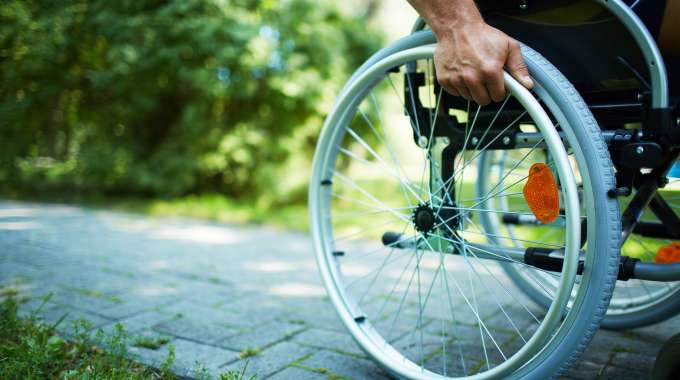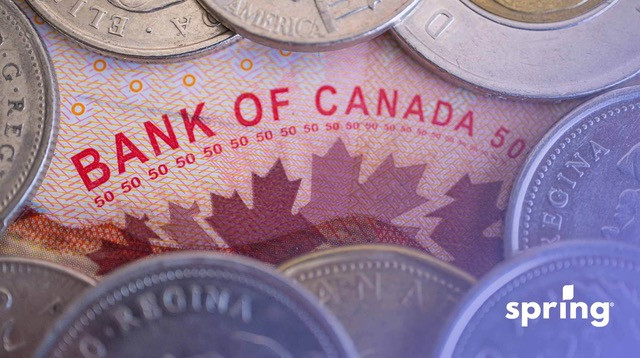How Carbon Taxes Work
With the increase in climate change and the cost of rebuilding due to climate change, such as repairs from flooding and wildfires, the government had to start charging for carbon pollution. This tax is on fossil fuels and anything with carbon emissions, such as carbon dioxide.
It is also meant to help combat people’s use of carbon-emission products. This is referred to as a carbon tax or carbon pricing, and depending on where you live in Canada, the amount of carbon tax is different. It is also important to note that this carbon tax levy is revenue-neutral to the federal government.
The federal government gave provinces and territories the ability to choose how they are implementing these taxes. They could choose to either use the federal pricing system or create their own carbon pricing system as long as it fell within federal guidelines, showing that the province or territory contributes fairly to reducing greenhouse gas emissions.
In order to create consistency, if the province or territories did not choose to charge for pollution or their proposed plan did not meet the federal standards, then the federal system would be put into place.
Federal Pricing
How the federal pricing system worked is that there were two parts to it. This was from the Greenhouse Gas Pollution Pricing Act that was adopted in June of 2018. The first part of the pricing was the federal fuel charge. The fuel charge was a regulatory charge on gas, natural gas and other fossil fuels. This federal fule charge applied to these provinces and territories:
- Ontario
- Manitoba
- Yukon
- Alberta
- Saskatchewan
- Nunavut
The second part was a performance-based system for industries; this is known as the Output-Based Pricing System. This part applied to:
- Manitoba
- PEI
- Yukon
- Nunavut
- Saskatchewan (partially)
All of the other Canadian provinces and territories had their own provincial government programs.

Cost of Carbon Taxes per Province
Because provinces could choose whether they created their own pollution charges or went with the federal plan known as the Canada Carbon Rebate, the amount varied per province. Because of this, the carbon tax credits they qualified for also vary per province based on the minimum price.
The provinces that received the Climate Action Incentive refundable tax credit also got a 10% rural supplement (also a tax free amount) if they qualified for it and didn’t live in a census metropolitan area. This was available to certain small and rural communities in the provinces that qualified.
British Columbia
In British Columbia, the federal system wasn’t used. In fact, the provincial government’s system had been in effect since 2008, before the federal levy was instituted. The charge in BC was $80 per ton on fossil fuels. This includes what you purchased at the pump and translates to somewhere around 11 cents per litre, which wasn’t too much different from the federal levy.
Unlike the federal system, the BCCATC (BC Climate Action Tax Credit) was based on income. Whether or not you were approved for this credit was based on your yearly income after you filed your income tax return. If you qualified, then the most you could get for the tax-free benefit would be $504 for yourself, $252 for a spouse or common-law partner (includes single parents with one child), and $126 for each child (excludes the first child in a single parent family).
Alberta
Alberta, although they tried to fight it, was added to the program under the Federal System in 2020. They even went all the way to the Supreme Court to avoid the tax, but they ultimately lost. That means Alberta charged $80 per tonne.
Because Alberta was under the Federal System, the tax credit is not based on your net income when you file your taxes. You had to file your taxes to receive it, though. This was known as the Climate Action Incentive and was distributed 4 times per year through direct deposit or however, you received your tax refund. The amounts were $900 for an individual, $450 for a spouse or common-law partner, $225 per child and $450 for the first child in a single-parent household.
Saskatchewan
Saskatchewan also strongly opposed the carbon tax. This makes a lot of sense, because just like Alberta, Saskatchewan is very involved in the oil and gas industry. They also had to go with the federal system when the supreme court case was lost.
The price of the tax in Saskatchewan was also the federal amount of $80 per tonne. The carbon tax rebate payments available in Saskatchewan were $752 for an individual, $376 for a spouse or common-law partner, $188 per child and $376 for the first child in a single-parent family.
Manitoba
Again, Manitoba wasn’t very happy with the carbon tax. They strongly opposed it just like Alberta and Saskatchewan. While they did attempt to create their own program, ultimately they had to go with the federal system.
This means that the tax in Manitoba was also $80 per tonne. The tax credit, just like Alberta and Saskatchewan, was the Climate Action Incentive. The carbon tax rebates were $600 for an individual, $300 for a spouse or common-law partner, $150 per child and $300 for the first child in a single-parent home.
Ontario
Ontario is another province that was opposed to the federal system. In their case, though, they were able to start implementing their own system. Until that was in place, though, the federal system applied, and the cost was $80 per tonne.
The rebate for those in Ontario was $560 for individuals, $280 for a spouse or common-law partner, $140 per child and $280 for the first child in a single-parent household.
Quebec
Quebec, similar to BC, had its own program implemented before the federal payment system came about in 2018. The tax that drivers have to pay was around 3 cents per litre in provincial carbon tax, and their charge was around $57 per tonne.
Quebec’s cap and trade system was designed to mainly affect producers instead of consumers, so the carbon tax was much lower on fuel than that of other provinces. Because they did not participate in the federal system or have their own rebate system, there are no carbon tax credits in Quebec.
Newfoundland and Labrador
Newfoundland and Labrador had its own system as well. The tax was 11 cents per litre or $50 per tonne and there were no rebates like you would see with the federal system. They then transitioned to the federal system and had rebates of the amounts $596 for an individual, $298 for a spouse or common law partner and $150.08 per child.
Nova Scotia
Nova Scotia also had a system similar to Quebec’s cap and trade system. It started in 2019 and offered no rebates. They had recently implemented the federal system and started giving out rebates in July 2023. The amounts were $409 for an individual, $206 for a spouse or common-law partner and $103 per child.
New Brunswick
New Brunswick didn’t use the federal system, but it still charged the federal rate of $50 per tonne. This means consumers were still paying that extra 11 cents at the pump. While New Brunswick didn’t used to have rebates, they did eventually transition to have rebates that were part of the federal credit. That amounts was $380 for an individual, $190 for a spouse or common-law partner, $95 per child under the age of 19, and $190 for the first eligible child in a single-parent family.
Prince Edward Island
PEI had only recently started using the federal system at $50 per tonne. As of 2023, residents started receiving rebates. The CCR amounts were $440 per individual, $220 for a spouse or common-law partner and $110 per child.
Northwest Territories
The Northwest Territories also had their own system. They charged around 11.7 cents per litre in carbon levies but their rebate system was different from that of the federal government. There was a 100% rebate on all levies paid on fuels used to heat the home. They also had a cost of living offset. This was around $104 per adult and $120 per child.
Yukon and Nunavut
Both the Yukon and Nunavut became part of the government system. That means that the tax was $50 per tonne and the rebate worked out to $80 per individual. It may be have been more depending on where you lived in this region.

Why You May Not Have Received Your Rebate
If you haven’t received a rebate, the most likely reason is that you haven’t filed your tax return. That is, as long as you are located in a province or territory that offers a rebate. In some cases, you may not meet the income requirement.
You may also not receive a rebate for the April payment or any payment if you have an amount owed to the Canada Revenue Agency (CRA). This can be any federal debt, including any income tax balances. This is a very likely reason if you are expecting Climate Action Incentive Payments. This payment can be kept by the CRA to pay towards the tax debt you owe or another debt regulated by the CRA. Once the debt is paid, then you will start receiving the rebate again as long as you are eligible.
Did the Carbon Tax Work?
According to the CRA, implementing the carbon tax and pricing pollution was working. Because of these extra charges, industries were being more innovative when it came to reducing carbon emissions and using more energy efficient alternatives. These industries were also becoming more efficient by using cleaner technology. That being said, it didn’t have much of an impact on overall fuel consumption.
Who Was Eligible To Receive the Canada Carbon Rebate
If you lived in a province or territory that issued the Canada Carbon Rebate, then your eligibility for the quarterly payment was based on your adjusted family net income and qualified dependants. In each province, this was going to be different, but here are the basic requirements that you needed to meet to be considered an eligible individual.
You needed to be at least 19 years of age for a month before the payment month and have/had a common-law partner or spouse. You could have been a parent and live or lived with your child. If you do have children and your child was already registered for Canada Child Benefits or the GST/HST credit, then the credit for the child will automatically be calculated.
When it came to whether or not you’d receive the CCR, the CRA made the decision. They decided based on your income amount for the tax year and your income tax and benefit return. If you were approved, then the tax-free payments would automatically be made quarterly to your bank account.
If you filed late, then you’d likely receive any retroactive payments for any CCR payments you should have been paid. Each amount a person was paid was different, even though there was a basic amount. It’s also important to note that these payments weren’t combined with payments or any balance owing.
When Did the Carbon Tax End?
As of April 1, 2025, the federal government decided to end the federal fuel charge. Because of this, all of the Canada Carbon Rebate programs are now being phased out. The last payment will be received once your 2024 income tax return is processed.
Overview
Overall, how much you paid in carbon tax and if you received a tax credit depends on where you lived in Canada. Most provinces used the federal pollution pricing system. Other provinces, like British Columbia and Quebec, had their own systems that they used.
The provinces and territories that used the federal system gave back a tax credit to the residents of that province or territory. The provinces that were not involved in the federal system had their own rebates, or they didn’t offer rebates at all. These rebates were meant to ease the financial burden of Canadians, especially when inflation increased so much.








